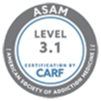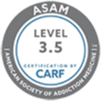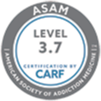What Are the Signs of Opioid Addiction?
Opioids are a type of drug that help alleviate pain. They work by reducing the amount of pain signals that the body transmits to the brain. Doctors often prescribe opioids to help patients who are dealing with an injury or chronic pain. When used properly, prescription opioids can be helpful to reduce pain. However, those who misuse these drugs by not following their doctor’s orders may become addicted.
The Opioid Crisis
There is currently an opioid epidemic in America. This epidemic affects public health as well as social and economic welfare. According to the Centers for Disease Control, the opioid epidemic is costing the United States $78.5 billion a year. These costs include healthcare, lost productivity, criminal justice fees and addiction treatment. Estimates from the National Institute on Drug Abuse show that approximately 21 to 29 percent of patients with chronic pain misuse opioids.
Opioids are highly intoxicating, so there is no clear-cut predictor of who is more or less likely to abuse them. Even those who have no history of addiction can become dependent. Knowing if a loved one has an opioid addiction is challenging. Some addicts show no obvious outward behavior, so it is important to pay attention to subtle signs.
Signs of an Opioid Habit
Since opioids are depressants, they cause drowsiness. A person using opioids, may start to nod off in the middle of a conversation or while watching television. The addict’s sleeping habits may also change. For example, the person may sleep for prolonged periods. Once the individual runs out of drugs, he or she may not sleep at all. These changes in energy levels can also alter the person’s exercise habits. Someone who used to exercise often might give up the habit altogether.
Some other common signs of opioid abuse include the following:
- Shallow or slow breathing
- Small pupils
- Constipation
- Nausea and vomiting
- Flushed skin
- Lack of good judgment
- Confusion
- Slurred speech
Opioid Withdrawal Symptoms
Those who abuse opioids regularly may develop a physical dependence. Their body becomes used to the drug, which means they need to take more to get high. Once people stop taking a drug after they become physically dependent, they experience withdrawal symptoms. For example, someone experiencing withdrawal may be irritable when they are craving a drug.
Some common withdrawal symptoms that opioid users may experience include the following:
- Anxiety
- Nasal congestion
- Rapid breathing
- Runny nose
- Tremors
- Muscle aches
- Enlarged pupils
- Diarrhea
- Loss of appetite
The severity of withdrawal symptoms vary based on how long an individual was abusing opioids. How much of the drug the person was taking can also play a role in the severity of his or her withdrawal symptoms. While these symptoms are not usually a medical emergency, they can be agonizing and are often intolerable. Many people who have a history of abusing opioids start using opioids again so they can stop experiencing those withdrawal symptoms.
After people complete the withdrawal process, they are no longer physically dependent on the drug. With that said, these individuals can still experience psychological dependence. There are powerful triggers that can cause a person to relapse. Stress is one of the main factors that cause people to relapse, which is why it is important for addicts to learn stress relief techniques.
Opioid Addiction Treatment
Once someone’s drug use becomes irrational and self-destructive, he or she has an addiction. This is especially true if the person is using medication for reasons other than pain relief. Fortunately, there is help available. Individuals may need to undergo detox at a licensed facility. Officials at the treatment facility can help safely wean addicts off opioids so they do not experience as many painful withdrawal symptoms.
The U.S. Department of Health and Human Services is starting to implement changes to address the opioid crisis. They are working to make treatment and recovery services more accessible. The government is funding more research on pain and addiction. Officials are working hard to create safe and non-addictive ways to manage chronic pain.











